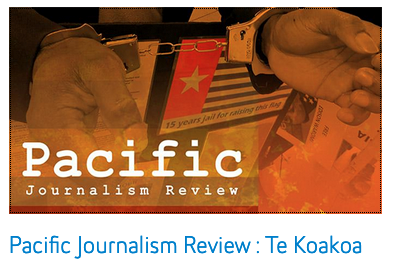Style Guide
Style Guide
Pacific Journalism Monographs are a peer-reviewed occasional research journal with editions devoted to a single themed issue covering communication, journalism and media studies in Australia, New Zealand the Asia-Pacific region. Founded at Auckland University of Technology’s Pacific Media Centre in 2012 the monograph provides an opportunity to publish research on greater depth than is possible with the companion journal, Pacific Journalism Review: Te Koakoa, into Pacific journalism theory and practice. The monograph has expanded into research and inquiry that reflect the broader impact of contemporary media practice and education.
A particular focus is on the cultural politics of the media, including the following issues – digital media and social movements, indigenous cultures in the age of globalisation, the politics of development, the role of the media and the formation of national identity and the cultural influence of New Zealand as a branch of the global economy within the Asia-Pacific region. It also has a special interest in environmental and development studies and communication – and the vernacular media in the region.
Articles submitted to Pacific Journalism Monographs should be original contributions and not under consideration for any other publication at the same time. Exceptions should be clearly indicated and why. If an article is accepted for publication, authors will need to assign copyright to the Pacific Media Centre to enable published articles to be held in the PJR and PJM subscription online databases.
Authors wishing to submit their research as a monograph should preferably first upload a proposal with an abstract of the planned publication and a justification for why Pacific Journalism Monographs should publish it.
When the article is completed it should be uploaded as a “blind” attachment without identifying details.
The metadata should be completed fully with:
- The article title,
- The abstract (maximum 200 words),
- Keywords,
- Author’s name,
- Brief biographical notes for publication, and
- Contact details (including email and mailing address for a copy of the monograph to be sent to).
All articles accepted for consideration by the editors are double blind peer-reviewed. Referee comments and reports are sent to contributors uploaded to the author’s Tuwhera account for PJM.
Authors are responsible for obtaining copyright clearance for any illustrations, tables, figures or other material previously published elsewhere. Preference will be given to articles with fewer than five graphs/tables. Rarely does the journal accept more than five. Photographs and images will be accepted for publication where appropriate and not usually more than three. Authors must supply all graphs/tables/images as independent jpg, tif or pdf files in high resolution format (minimum of 300 dpi).
Authors sign a waiver enabling PJM article to be stored on electronic databases and Open Access and receive a complimentary copy of the print edition which includes their published article.
Main sections:
The authors grant the monograph a Creative Commons nonexclusive worldwide licence for electronic dissemination of the article via the internet, and, a nonexclusive right to license others to reproduce, republish, transmit, and distribute the content of the journal.
Authors agree that the journal will not be liable for any damages, costs, or losses whatsoever arising in any circumstances from its services, including damages arising from the breakdown of technology and difficulties with access.
Exceptions can be made by the editors as appropriate.
The editorial style of the monograph is American Psychological Association (APA) with some slight PJR variations.
Common style guide:
References and style follow guidelines provided by the American Psychological Association with some slight PJR variations. For questions on references and style, consult the following APA guide at AUT University in the first instance: http://aut.ac.nz.libguides.com/APA6th/referencelist
Other guides: American Psychological Association (2009). Publication manual of the American Psychological Association (6th ed.). Washington, DC: APA. www.apastyle.org
Or The Owl at Purdue APA style guide: http://owl.english.purdue.edu/owl/resource/560/01/
Note that APA style differs from journalistic style in many respects. A custom-designed APA v6 style guide from AUT is helpful as a PJR reference.
In text citations:
(Dadge, 2005, p. 46) or (Morgan & Thomas, 1996, p. 32)
Articles in journals:
Hollings, J., Lealand, G., Samson, A., & Tilley, E. (2007). The big NZ journalism survey: Underpaid, under-trained, under-resourced, unsure about the future – but still idealistic. Pacific Journalism Review, 13(2), 175-197.
Chapters in books:
Berkowitz, D. A. (2009). Reporters and their sources. In K. Wahl-Jorgensen and T. Hanitzsch (Eds.), The handbook of journalism studies (pp. 102-115). New York: Routledge.





